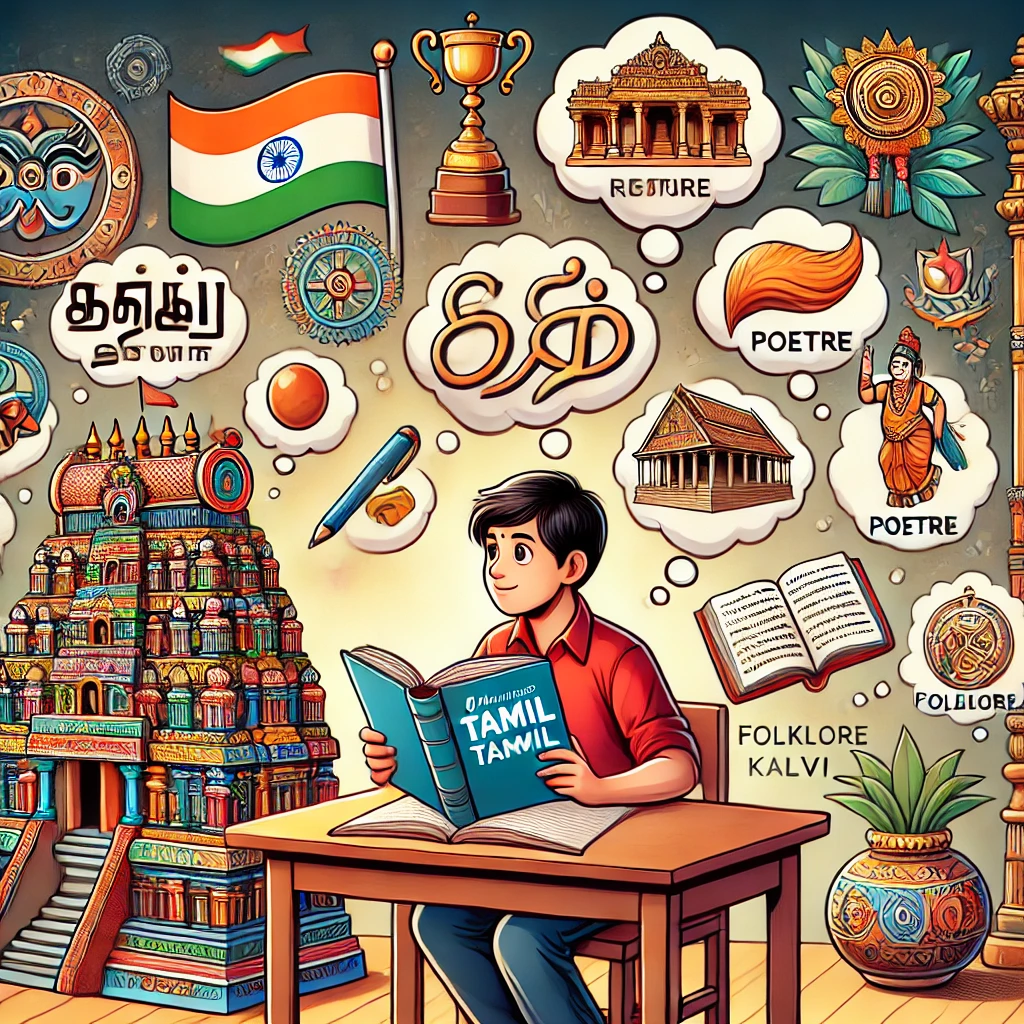A Comprehensive Guide to Examining the Sixth Standard Tamil Textbook
For students learning the Tamil language and exploring its rich literary heritage, the 6th Standard Tamil textbook is an important part of the Samacheer Kalvi curriculum. This guide clearly explains the structure, lessons, and learning path supported by the textbook.
download pdf book click

Getting to Know the Samacheer Kalvi Curriculum
The Tamil Nadu Uniform System of School Education, or Samacheer Kalvi, aims to ensure consistent and high-quality education across the state. The 6th Standard Tamil textbook is carefully designed to support this objective by providing a balanced and comprehensive learning experience.
Textbook Organization and Structure
The textbook is divided into three terms, each containing modules that cover prose, poetry, and additional reading materials.
Term I: Building a Foundation
- Prose: Introduces stories that convey moral principles, depict everyday life, and share cultural tales to enhance understanding and critical thinking skills.
- Poetry: Features poems that explore classic subjects, emotions, and nature to develop an appreciation for poetic forms and expressions.
- Supplemental Reading: offers additional stories and essays to promote self-directed learning and comprehension.
Term II: Looking Beyond
- Prose: Focuses on historical narratives and biographies of notable individuals to inspire a sense of heritage.
- Poetry: Includes works that delve into human experiences and societal themes, fostering empathy and social awareness.
- Supplemental Reading: Expands literary appreciation and analytical skills through a variety of genres.
Term III: Expanding Comprehension
- Prose: highlights current events and scientific discoveries to encourage critical thinking and curiosity.
- Poetry: showcases contemporary poetic expressions that stimulate imagination and foster a deeper connection with the language.
- Supplemental Reading: Introduces advanced materials to develop higher-order thinking skills in preparation for future studies.
Essential Elements of the Textbook
Comprehensive Language Development
- Focus on speaking, listening, reading, and writing skills through diverse exercises and activities.
Cultural Integration
- Incorporates folklore, customs, and modern cultural elements to provide a broad understanding of Tamil heritage.
Interactive Learning
- Encourages active participation through group activities, projects, and thought-provoking questions.
Assessment and Progress Monitoring
- Periodic tests, revision exercises, and self-evaluation tools help track progress and identify areas for improvement.
A Methodical Approach to Using the Textbook
1. Sequential Learning
Follow the textbook in order, as each term builds on the previous one to ensure a structured learning progression.
2. Active Engagement
Participate in the activities, recitations, and discussions mentioned to strengthen comprehension and memory.
3. Extra Reading
Make use of the extra reading sections to broaden your literary horizons and develop your critical thinking abilities.
4. Regular Assessment
Complete the unit-end activities and assessments to identify areas needing reinforcement and gauge understanding.
5. Seek Clarification
Consult teachers or additional resources to clarify challenging concepts and ensure thorough understanding.
Benefits of the 6th Standard Tamil Textbook
Holistic Education
- Provides a balanced educational experience by fostering both cultural understanding and language proficiency.
Critical Thinking Development
- Encourages analysis, interpretation, and reflection through exposure to diverse literary genres and topics.
By leveraging the 6th Standard Tamil textbook effectively, students can gain a well-rounded understanding of the Tamil language and its cultural significance. The comprehensive curriculum ensures that learners are well-prepared for both academic and real-world challenges


